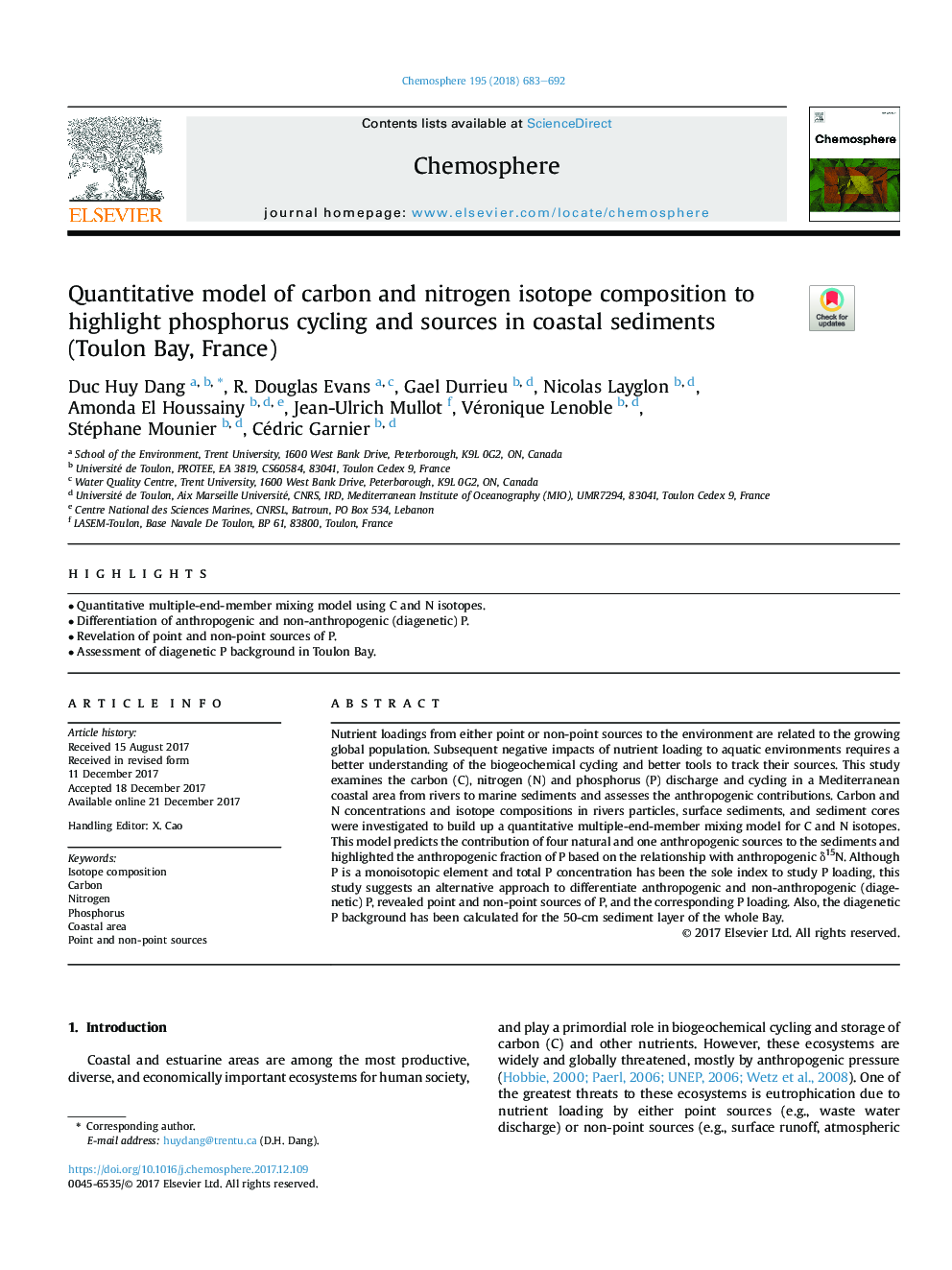| Article ID | Journal | Published Year | Pages | File Type |
|---|---|---|---|---|
| 8852245 | Chemosphere | 2018 | 10 Pages |
Abstract
Nutrient loadings from either point or non-point sources to the environment are related to the growing global population. Subsequent negative impacts of nutrient loading to aquatic environments requires a better understanding of the biogeochemical cycling and better tools to track their sources. This study examines the carbon (C), nitrogen (N) and phosphorus (P) discharge and cycling in a Mediterranean coastal area from rivers to marine sediments and assesses the anthropogenic contributions. Carbon and N concentrations and isotope compositions in rivers particles, surface sediments, and sediment cores were investigated to build up a quantitative multiple-end-member mixing model for C and N isotopes. This model predicts the contribution of four natural and one anthropogenic sources to the sediments and highlighted the anthropogenic fraction of P based on the relationship with anthropogenic δ15N. Although P is a monoisotopic element and total P concentration has been the sole index to study P loading, this study suggests an alternative approach to differentiate anthropogenic and non-anthropogenic (diagenetic) P, revealed point and non-point sources of P, and the corresponding P loading. Also, the diagenetic P background has been calculated for the 50-cm sediment layer of the whole Bay.
Related Topics
Life Sciences
Environmental Science
Environmental Chemistry
Authors
Duc Huy Dang, R. Douglas Evans, Gael Durrieu, Nicolas Layglon, Amonda El Houssainy, Jean-Ulrich Mullot, Véronique Lenoble, Stéphane Mounier, Cédric Garnier,
